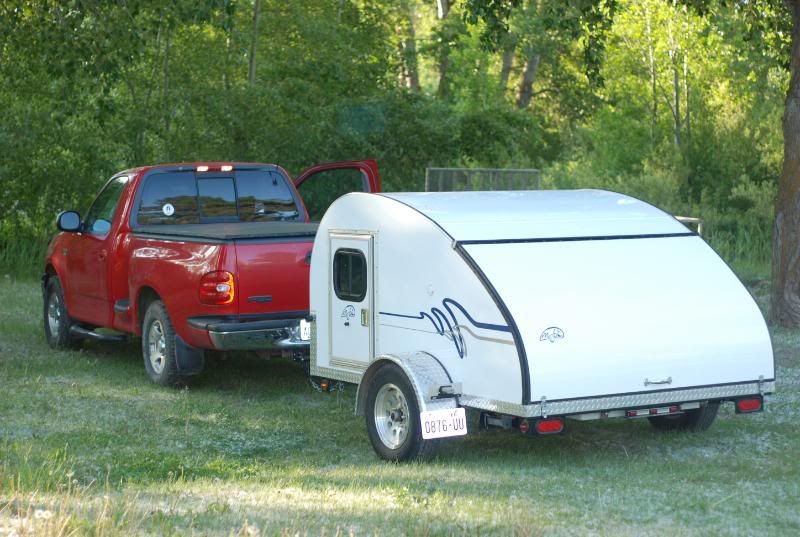xrover wrote:...The guidelines say you need 1 watt per cubic ft of space to maintain room temperature (this is a loose interpretation of building codes). For a 4x8 tears, that works out to less than 100 watts...
The problem is that heat requirement is all about the surfaces of the space, not the volume. It would make more sense to say how many watts are needed per square foot of walls, roof, and floor.
The residential guideline assumes that the space is of normal house proportions, but a trailer is much smaller and thus has much more area losing heat per cubic foot of interior. They also assume normal residential insulation levels, while trailers have much less insulation. Finally, houses sit on (or into) the ground, while trailers have a bottom exposed to the cold air.
The other problem is that the heat input which is required obviously depends on the outside temperature.
For a marginally insulated teardrop in sub-freezing temperatures, 100 W doesn't sound like nearly enough, although there is the contribution of body heat!
An important point here is that the electric heat requirement assumes a nearly continuous source, instead of the blast-and-shutdown approach of the portable propane heaters. If a heat source can be run continuously, I agree that it can be pretty small. A tiny (physically, and in heat output) propane furnace which is safe to run continuously would be nice.


 A 300 watt bulb (or equivalent power) would heat the inside. We keep dogs and plenty of other farm animals warm all winter long with light bulbs. A SMALL electric heater heater as several have posted would be plenty to keep a 8-10 ft. tear warm -- esp. if it is insulated .75-1 inch in the walls -- many also have 2 inch thick foam in the floors -- our dogs never had it that good!
A 300 watt bulb (or equivalent power) would heat the inside. We keep dogs and plenty of other farm animals warm all winter long with light bulbs. A SMALL electric heater heater as several have posted would be plenty to keep a 8-10 ft. tear warm -- esp. if it is insulated .75-1 inch in the walls -- many also have 2 inch thick foam in the floors -- our dogs never had it that good!